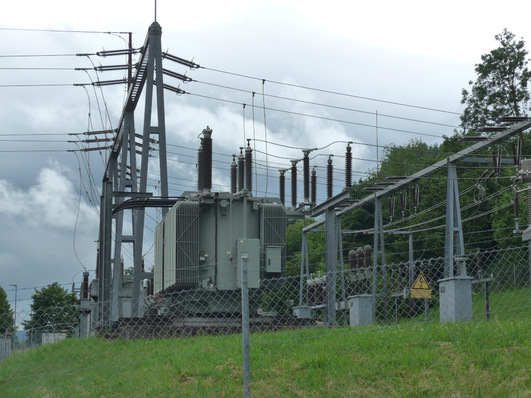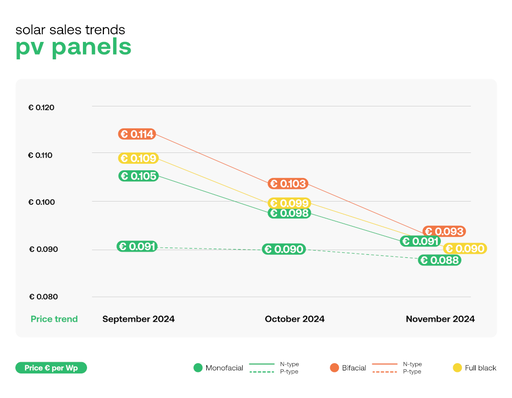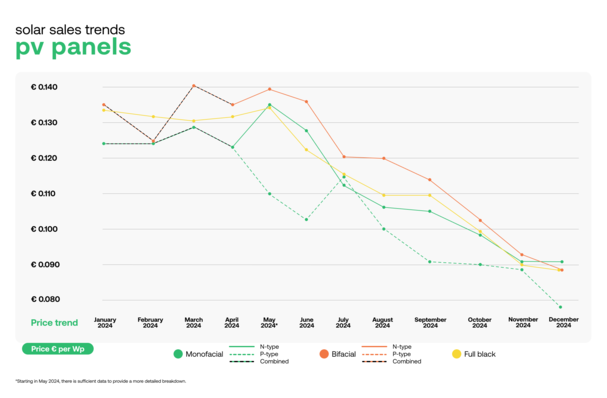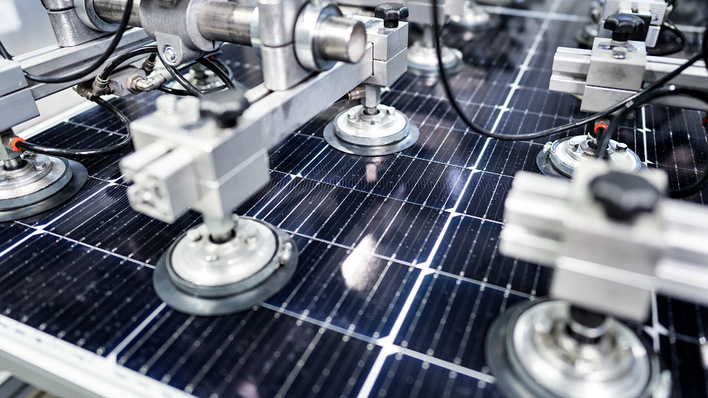Not only in Germany, but throughout Europe, battery storage systems are booming as a result of the energy transition. According to SolarPower Europe, battery storage systems with a capacity of 17.2 GWh were installed in 2023, almost twice as much as in the previous year. The total installed capacity in Europe was 35.8 GWh. For 2024, the industry association estimates that at least 22.4 GWh will be added across Europe (an increase of 31%). Final figures are not yet available.
While growth has so far been driven primarily by residential storage systems in households, more and more energy suppliers, solar and wind farm operators, as well as industrial and commercial enterprises, are now acquiring large battery storage systems. According to the “European Market Outlook for Battery Storage 2024-2028” by SolarPower Europe, the European battery storage market is expected to grow to a total installed capacity of up to 135 GWh in four years, and to 78 GWh in a medium scenario. The latter corresponds to an annual market growth of 30-40%.
Boom in large-scale projects expected
Large battery storage systems, especially grid storage systems (so-called utility-scale storage), are becoming increasingly dominant. Their share of newly installed capacity is expected to climb to 45% by 2028 (2023: 21%), while the share of commercial storage (commercial and industrial) is expected to rise to 25% (2023: 9%), and the share of private home storage is expected to fall to 29% (2023: 70%).
Also see: Expert analysis – How to approach battery energy storage systems in Europe
The increasing importance of large-scale battery storage systems is mainly due to the growing demand for grid stabilization services and the shifting of peak loads caused by the increasing share of fluctuating solar and wind power across Europe. In many places, energy suppliers are increasingly relying on grid storage systems to absorb large amounts of electricity in a matter of seconds and release it again when needed, thus keeping the grids stable and making better use of the lines in normal operation.
Also see: Large battery storage systems as new champions
In addition, it often makes economic sense for companies to invest in large battery storage systems when electricity supply and prices fluctuate. This is because electricity can be bought cheaply on the exchange, for example at midday when photovoltaic systems are running at full speed, and sold again in the evening when prices rise. Operators of solar and wind farms can avoid their plants being disconnected during periods of surplus electricity and price cannibalization by using large battery storage systems to shift the feed-in to the evening hours.
Tumbling prices – lithium-ion technology dominates
This is particularly worthwhile for companies because the costs and prices of battery storage have fallen sharply due to economies of scale and technological improvements. According to the International Energy Agency (IEA), prices for the predominant lithium-ion batteries (cells and rechargeable batteries) have fallen from around 690 USD/kWh (6 35 EUR/kWh) in 2014 to less than 140 USD/kWh (129 EUR/kWh) in 2023. This corresponds to an average annual decrease of about 15 %.
Listen to our new podcast: Solar Investors Guide #4 – Long-term storage with iron flow technlogy
The IEA expects battery storage costs to fall significantly again by 2030, by an estimated 30% for large-scale battery storage and 21% for small-scale battery storage. “Lithium-ion batteries are the leading technology for stationary storage, not only because of their low cost but also because of their high durability,” says Raffaele Rossi, Head of Market Intelligence at SolarPower Europe. They also have a high energy density per weight and volume, high charging and discharging performance, are scalable and currently readily available, according to Katja Esche, spokeswoman for the German Energy Storage Systems Association (BVES).
Most important European market: Italy
According to SolarPower Europe's forecast, Italy will be at the forefront of large-scale battery storage in Europe over the next four years. Grid storage systems in particular will benefit from the rapidly growing demand for balancing the fluctuating electricity production resulting from the strong expansion of renewable energies. The use of storage systems will be supported by a state-backed capacity mechanism and legally regulated auctions for storage capacities (MACSE) with long-term supply contracts.
In this case, the national transmission system operator Terna pays a capacity premium to MACSE-supported projects, i.e. to the operators of corresponding grid storage facilities, which is exchanged for income from electricity trading. In addition, companies are offered 15-year contracts to support investment in storage capacity as part of the capacity market.
Subscribe to our special newsletter PV for investors
In addition, Terna will launch a new energy trading platform that will enable storage operators to sell time-shifting of energy to solar and wind farm operators, as well as ancillary services. As a result of the new regulations, the addition of grid battery storage in Italy is expected to increase to 5.2 GWh in 2024, which corresponds to 67% of the total Italian battery storage market. By 2028, an annual new installation of grid storage with a capacity of more than 8 GWh is expected in the country (59% of the Italian storage market).
Great Britain number two – Germany number three
Great Britain is number two in Europe for large-scale battery storage. There, the provision of grid storage by companies is also actively financed through a statutory capacity remuneration mechanism. In addition, there are ambitious national expansion targets for energy storage – 24 GW by 2030. For 2024, SolarPower Europe expects an increase of 3.7 GWh in grid storage (82% of the British battery storage market), and 4.7 GWh annually by 2028 (65% of the British battery storage market).
In the ranking for the forecast from 2024 to 2028 in total battery storage growth in Europe, Germany is in third place, with utility-scale storage expected to increase to 65% in 2028.
Eastern European countries are also investing in large-scale battery storage
In Eastern Europe, too, large battery storage systems are becoming increasingly popular as a result of the expansion of renewable energies and the pursuit of energy security. Their expansion is financially incentivized – supported by the EU – as was recently demonstrated at the Cisolar & Greenbattery 2024 conference in Bucharest. Among other things, Romania will introduce capacity auctions for grid storage from 2026 and is already relying on Contracts for Difference (CfD).
Poland also has capacity market auctions and tax incentives to promote large-scale battery storage. In Hungary, up to 45% of the project costs for large-scale battery storage are covered by grants, in addition to a CfD program and grid connection facilitations.
See also: Central & Eastern Europe - Utility-scale storage market set to increase fivefold by 2030
Lithuania is also promoting grid-scale battery storage through various measures. The expansion of large-scale battery storage in war-torn Ukraine is heavily financed by international donors, and there are also exemptions from import duties. By 2030, the market for utility-scale battery storage in the six most important countries in Eastern and Central Europe will grow fivefold, according to industry representatives such as Eliza Stefan from Jinko Solar at the industry event in Bucharest. (hcn)








